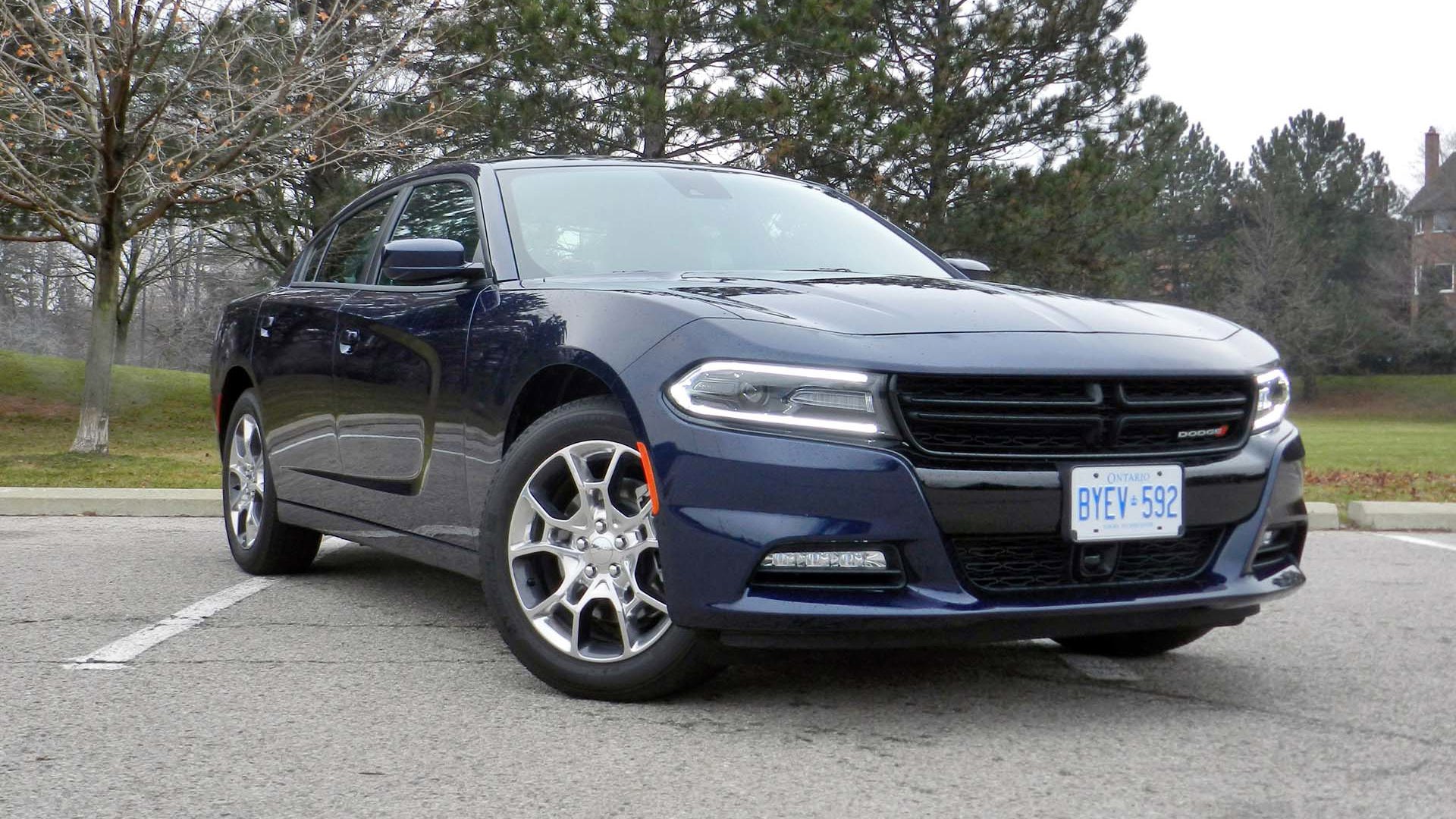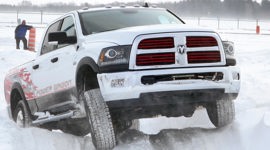 AutoTrader SCORE
AutoTrader SCORE
-
EXTERIOR STYLING7/10
-
INTERIOR7/10
-
PERFORMANCE7/10
-
COMFORT9/10
-
FUEL ECONOMY6/10
The new Charger design is worlds better than the previous edition. The front end that looked misshapen and clunky in the previous iteration now looks menacing and cool. The LED running lights that curve around the headlight trims are a big part of that. It’s not as tough in standard trims as it is in Hellcat mode, of course, but that’s a little like saying Mike Tyson doesn’t look as tough now as 20 years ago – you still don’t want to mess with him.
It’s a capable car, a big, stoic workhorse, but it’s more draughthorse than racehorse.
The Charger is a bit of a curious animal. Even the name of this trim, the SXT Rallye AWD, implies a sportiness and a playfulness that’s not really borne out by the rest of the car. It’s a capable car, a big, stoic workhorse, but it’s more draughthorse than racehorse.
The 3.6L Pentastar V6 is mated to an eight-speed auto, shunting its 300 hp and 264 lb-ft of torque to all four wheels. The 300 hp is up from 292 and torque up from 260, the bump coming courtesy of the $195 Rallye group add on. To help handle the extra power you get a rear spoiler and a more aggressive R/T spec front fascia plus performance tires.
The engine is one of Ward’s 10 Best Engines, and for good reason. Is it as raucous as any of the eights on offer? No, of course not. But it does have a pleasing note and it does surge forward with some confidence. If the V8s are the heavyweights, the Pentastar is a middleweight that still packs a solid punch. Or maybe it’s a bear hug.
Fuel economy wise the Pentastar is rated at 12.8/8.6/10.9 L/100 km city/highway/combined. I saw 12.8 for my week of mostly city driving, lots of cold weather idling and a little more “see, it’s actually kind of quick” accelerating than I ought to admit.
Nissan’s 3.5L V6 in the Maxima puts out almost identical power figures but far better economy, 10.9/7.8/9.5, plus it sounds glorious. The Chevrolet Impala edges the Charger just slightly in the power stakes and makes marginally better economy too at 12.5/8.2/10.6. So while this Pentastar is a rewarding and very strong engine with a smooth, quiet nature that makes it the ideal workhorse in this application, you might expect an update to it soon.
Of course, neither of those are available with a V8, so the Pentastar might not need to compete in outright numbers with them. And the R/T is only $2,300 more in base MSRP, so why wouldn’t you just get the hemi?
(Spoiler: Yes, you can.) Can You Drive a Rear-Wheel-Drive (RWD) Car in Winter?
Well, you can’t get AWD with the Hemi for a start. And just because there IS a muscle-car edition (or three editions) of this large family sedan, it’s not the only reason it exists. Large family sedans might not be en vogue these days but they are still worthy chariots for mid-large family. Like highway cruising? This does it supremely well, with a gentle lope that eliminates ugly engine noise and provides confident overtaking ability.
Got three kids and a wife/husband who still likes being with you? The Charger will fit three sullen teens and their emo haircuts in the back without any of them having to touch each other. Shoulder room is generous, but the middle passenger will have to straddle a fair high transmission tunnel. The middle passenger is also the only person who doesn’t get a heated seat. There are two USB ports back there for your kids to charge their devices. Maddie said, “if I had an iPad I could use it in this car Daddy!” I think that she was dropping me a hint.
At 467L the boot is big enough to swallow their too, though the shrouds that protect your luggage from the hinges eats into the space a lot. As a result, the Chevrolet Impala boasts 65L more room. My daughter delighted in the generous legroom, and the internal size of the Charger was deceptively large. It wasn’t until my daughter’s stuffed toy flew across to the other seat that I realized how much size there is back there. I reached back to get it for her (while stopped at a traffic light) and found I couldn’t actually reach the back seat. This is rare in a lot of the cars I test, and while SUVs pack bigger passenger volume numbers, a lot of that is in height, here, it’s all length.
The Charger is a substantial 1,900 kg of which only 100 kg can be attributed to the AWD system. Most of it is just largess. Dodge doesn’t visually shrink their cars, shirking that industry trend in favour of raw, unbridled size. The bonnet is long, as is the trunk lid, the fenders are wide. Even the polarising coke-bottle indent in the side of the car adds to its visual scale. Personally, I’m not a fan of that design detail, though I know many are.
The 19-inch wheels fitted to this tester don’t quite fill the wheel arches properly either and that further exaggerates the Charger’s bulk.
There are advantages though: the heft and long wheelbase combine to create a relaxed and gentle ride even over rough pavement, the car soaking up the bumps in the road. The suspension is well damped, never pogoing, always returning to its normal setting quickly and without fuss.
And yet the Charger still maintains some athleticism. Not enough, frankly to justify the ultra-nimble sounding “SXT Rallye” naming, but enough to make the Charger one of the more enjoyable large sedans to drive. It will turn in fast, hold a line cleanly and provide good feedback through the wheel. Sweeping corners are admittedly more fun than tight, sharp things, but again, this isn’t a rally car. It’s a large sedan.
The RWD-based driveline (rather than FWD) helps inject that fun too. In fact, on the highways the Charger decouples the front axles, and in most full-throttle applications most of your torque and power is arriving into the world via the rear tires. This is fun for a number of reasons.
It also sets the Charger apart in the US and Japan-heavy family sedan market. It’s the only RWD mainstream sedan we see here, with the soon-to-be-discontinued Chevrolet SS only available in the USA. Indeed, when Australian plants shut down production of the SS (AKA Holden Commodore) and the Ford Falcon in 2017 there basically won’t be any RWD sedans left in the non-luxury market. Just this one and its stablemate the 300C.
This being Canada and all, a lot of people will be taking a look at adding AWD to the Charger though. I have strong thoughts about why you should not AWD all the things but some people prefer the grip and control afforded by AWD in Canadian conditions over going sideways.
But is it worth it? It costs an extra $1,800 to turn the $37,895 SXT into an AWD edition though curiously that jump is only $1,200 if you want to turn the base model SE into an AWD. Once you’ve selected AWD you get a $700 discount on the Premium Group package that includes brake assist, ventilated front seats, rear-seat armrest, illuminated rear cup holders, auto-dimming mirror, heated mirrors, rain-sensing wipers, GPS, power front seats, heated rear seats, lane-departure warning, lane-keep assist, radio/driver seat/mirror memory settings, automatic highbeam, FWD collision with active braking, heated steering wheel, adaptive cruise control, UConnect 8.4-inch, 10-spaker Beats by Dre audio plus a power tilt/telescoping steering wheel. That package is $5,995 on RWD models and $5,295 here.
This is where things begin to get messy. Dodge’s packages mean you can start to get some serious complexity and budget blowing going on when you drill down. Some options, like sport seats ($295) and the Rallye Appearance Group with extra hp, torque, a spoiler, performance tires and paddle shift ($495) are really well priced. Others, like this premium group and the $1,395 black roof are not.
Then there are a Porsche-level number of combinations and option groups that could lead to cost overruns.
Still, FCA group has a lot of really useful and enjoyable features. We’ve gone on about UConnect before – it’s touchscreens done right. The instrument cluster is beautiful, fun, easy to use and packs more information than just about any other on the market. By the time you add the full 8.4-inch system with its replay and playback functions, all the safety stuff like adaptive cruise, lane-departure and blind-spot warnings et al there’s a lot of car here.
The interior design is top notch, but some of the materials on this tester were easy to scuff and a little cheap. Still the surfaces are all forgiving where you touch them and visually interesting in most places. The Maxima has better quality materials, but the Charger outdoes the Impala here.
Ergonomically all the major functions are laid out well, but there are some peripheral quirks that will take used to getting used to. The fuel cap button for example. First of all, why does it have one? Most other cars now have a springy lid that releases itself, no button required. Second, why is it hidden in the door trim, facing the front of the car? The trunk release button is also tiny and off centre, under a healthy coat of road salt I couldn’t actually see it at first. Those are minor gripes, mind you.
The V6 Charger is very much an adequate car, and I mean that in the good sense. It has strong bones and that means great driving dynamics, solid amenities and excellent comfort. If you want something large, don’t want an SUV and value solid comfort and capability the Charger in V6 AWD is a great option.
But with the V8 so close at hand price wise, maybe you’ll want to take that extra step and get yourself a little more “phwoar”.
| Warranty: 3 years/60,000 km; 5 years/100,000 km powertrain; 3 years/unlimited distance corrosion perforation; 5 years/100,000 km roadside assistance Competitors: |
| Model Tested | 2016 Dodge Charger SXT Rallye AWD |
|---|---|
| Base Price | $39,595 |
| A/C Tax | $100 |
| Destination Fee | $995 |
| Price as Tested | $49,565 |
|
Optional Equipment
Sport bucket seats - $295, Rallye Appearance Group (gloss black fascia, R/T front end, Rallye badge, spoiler, paddle shift, sport mode II, 235/55/19 Performance Tires) - $495, AWD Premium Group (brake assist, ventilated front seats, rear-seat armrest, illuminated rear cup holders, auto-dimming mirror, heated mirrors, rain-sensing wipers, GPS, power front seats, heated rear seats, lane-departure warning, lane-keep assist, radio/driver seat/mirror memory settings, automatic highbeam, FWD collision with active braking, heated steering wheel, adaptive cruise control, UConnect 8.4-inch, 10-spaker Beats by Dre audio, power tilt/telescoping steering wheel) - $5,295, Power Sunroof - $1,395, Black roof - $1,395
|
|







































